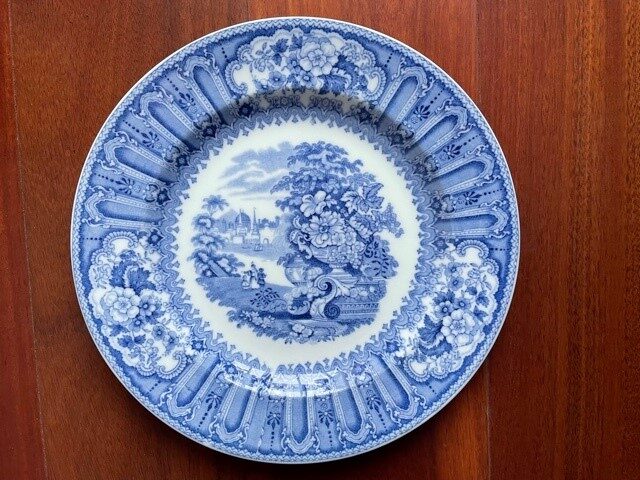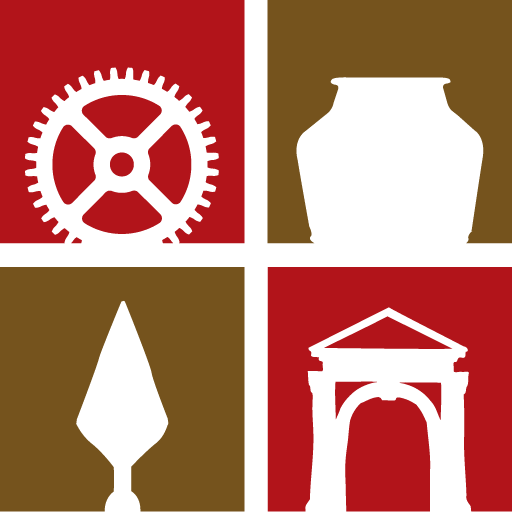When you mention a weekend in Hobart most people consider a visit to MONA a must. Often overlooked is the Tasmanian Museum and Art Gallery (TMAG). Growing up in Tasmania this was a favourite place and for me a weekend in Hobart is not complete unless I pay a visit. It has changed greatly over that time, the exhibition areas have increased and it now occupies in several buildings a whole city block. TMAG is the second oldest museum in Australia and its origins are in the collections of Australia’s oldest scientific society, The Royal Society of Tasmania, established in 1843. TMAG sits on the land of the Muwinina and Mumirimha people.[1]
Five windows overlooking the Central Gallery are home to the 50 Shades of Blue exhibition. Displayed in these window cases are more than 150 transfer printed plates from the museum’s collections that range in date from the late 18th to the early 20th century. The plates in each of the five windows are grouped according to what is depicted and are labelled: animals and flowers, Britain, China, antiquity and other tales, and a taste for the exotic. All the plates are numbered and a handy key provides details. This long-term exhibition uses the windows in an ingenious way to display transfer printed wares in a space often overlooked for exhibitions.[2]

After seeing the exhibition do take the time to see the rest of TMAG. Although currently closed for restoration the Private Secretary’s Cottage sits on a remnant of the original foreshore of Sullivan’s Cove and dates to 1815, or a little before. The oldest building, and Tasmania’s oldest public building, is the Commissariat Store built 1808 – 1810. This became inadequate after only a few years and the brick Bond Store facing the water was built 1824 – 1826. Restored and now an exhibition space it is here that the fabric of the building is evident with even the graffiti preserved on the walls. The Queens Warehouse built in 1869 runs between and is perpendicular to the Bond Store and the Commissariat Store. Other buildings and changes occurred over the subsequent 150 years, with more redevelopment planned in the future.[3]
[1]In February 2021 TMAG offered an apology to Tasmanian Aboriginal people for the violence inflicted on them since 1803. https://www.tmag.tas.gov.au/about_us/apology_to_tasmanian_aboriginal_people
[2] https://www.tmag.tas.gov.au/whats_on/exhibitions/longterm/fifty_shades_of_blue
[3] Two books published by TMAG provide an excellent history of both the site and the collections, Collections: Tasmanian Museum and Art Gallery (2007) and Site: Tasmanian Museum and Art Gallery (2008)

